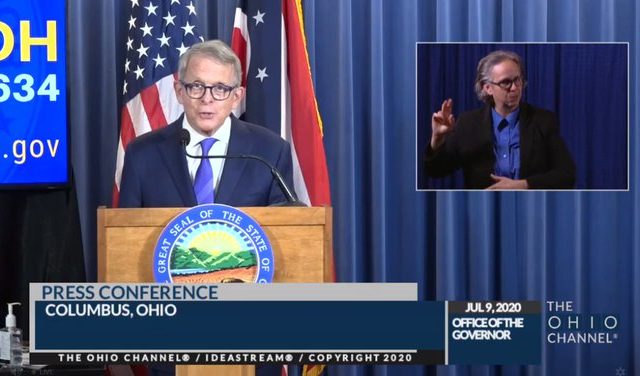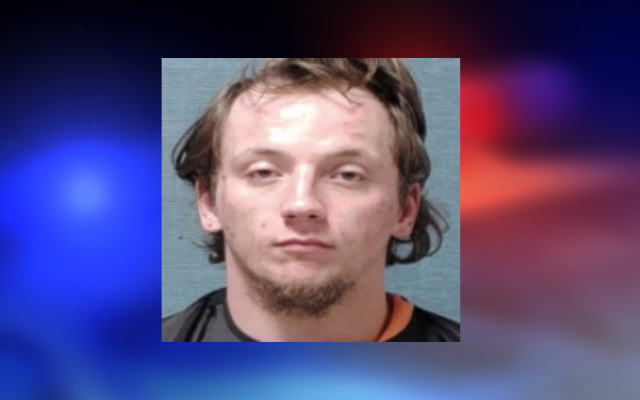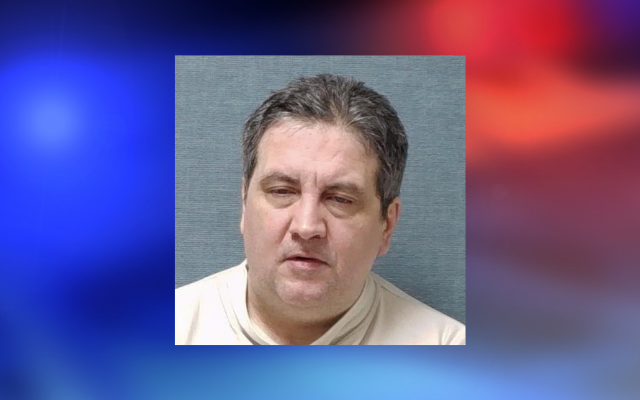DeWine Reveals Return Plan for Colleges, Provides Update on County Map

COLUMBUS (News Talk 1480 WHBC) – This afternoon Governor Mike DeWine spoke in Columbus, providing updates on COVID-19 in Ohio. Here is a complete outline on everything discussed.
Update on COVID-19 Numbers in Ohio
The Ohio Department of Health’s latest report shows another jump in current hospitalizations. There are now 905 Ohioans hospitalized due to COVID-19. The Buckeye State has a total of 61,331 cases and 3,006 deaths.
Governor Mike DeWine announced that the state currently has a positive test rate of 6.4% which he says is too high for his liking.
Update on Risk Level Map
NEW RISK LEVEL MAP: 12 counties have triggered enough indicators to be at Red Alert Level 3. Three of those counties are on the watch list, meaning they are close to reaching Level 4: Butler, Cuyahoga, Hamilton.
Franklin Co. dropped off the watch list. Huron now a Level 2. pic.twitter.com/59M9Yl4vT6
— Governor Mike DeWine (@GovMikeDeWine) July 9, 2020
There are now 12 counties in Ohio that have reached the red level, or level three of the state’s Public Health Advisory System. Governor DeWine says three of these counties are on the watch list, meaning they are close to reaching Level 4: Butler, Cuyahoga, Hamilton.
Summit County is one of the new counties to reach the red level. An order from the Ohio Department of Health went into effect yesterday, mandating masks for all citizens while in public in counties that are at levels three or four.
The mask order will go into effect for the new red level counties, including Summit, at 6 p.m. on Friday.
More information on the status on Summit County can be found here.
Update on COVID-19 Numbers in Stark County
The latest COVID-19 numbers in Stark County have yet to be made available on the state’s COVID-19 website. WHBC will update this story with today’s local figures once they are provided.
Return Plan for Colleges in Ohio
The Ohio Department of Higher Education is working with the Ohio Department of Health, health experts and the public and private colleges in the state to produce guidance for campuses to reopen safely this fall. The state has released guidance for colleges that is available on Ohio’s coronavirus website.
The Guidance includes minimum operating standards that should occur on all campuses, as well as best practices to further enhance those standards.
Governor DeWine says each campus must develop policies and procedures for COVID-19 testing and isolation of symptomatic students, faculty, and staff members. Testing of symptomatic individuals should take priority over all other testing tactics.
DeWine acknowledged that the changes will not be cheap for universities to make. DeWine says he has spoken with leadership in the General Assembly, and his administration is requesting that the Controlling Board approve its initial request on Monday to allocate $200 million for higher education and $100 million for K-12 educational institutions.
This funding comes from federal CARES Act dollars and schools would be able to use it to meet their unique individual needs. DeWine says the state intends for this funding to be very flexible to prevent the spread of COVID-19.
“We intend to make this funding available to all public and private K-12 schools and to all of our 2- and 4-year colleges and universities, both public and private, including adult career tech providers.”
The administration’s request to the Controlling Board is in addition to the more than $440 million in direct federal CARES Act funding that Ohio’s K-12 schools are receiving. DeWine says the state’s colleges and universities also received more than $190 million of direct federal funding.
Helping the Homeless
In April, Governor DeWine announced a $1 million grant to the Coalition on Homelessness and Housing in Ohio (COHHIO) to support homelessness prevention efforts and to rapidly rehouse individuals and families experiencing homelessness – who could be at a greater risk of contracting COVID-19.
DeWine says through these resources COHHIO was able to keep 100’s of Ohioans safely housed during the COVID-19 pandemic. This afternoon, DeWine announced an additional $15 million grant to COHHIO to ensure Ohioans can maintain their housing during this time.
Plasma Donations Welcomed From Those Who Have Recovered
Convalescent plasma, which is plasma from recovered COVID-19 patients, is rich in antibodies that could possibly attack the virus that causes COVID-19. Lt. Governor Jon Husted says it shows promise to lessen the severity or shorten the length of COVID-19.
The state is encouraging people who have been fully recovered from COVID-19 for at least two weeks to consider donating plasma. More information on how you can donate can be found here. Husted says Ohioans can also contact their local blood donation center.



